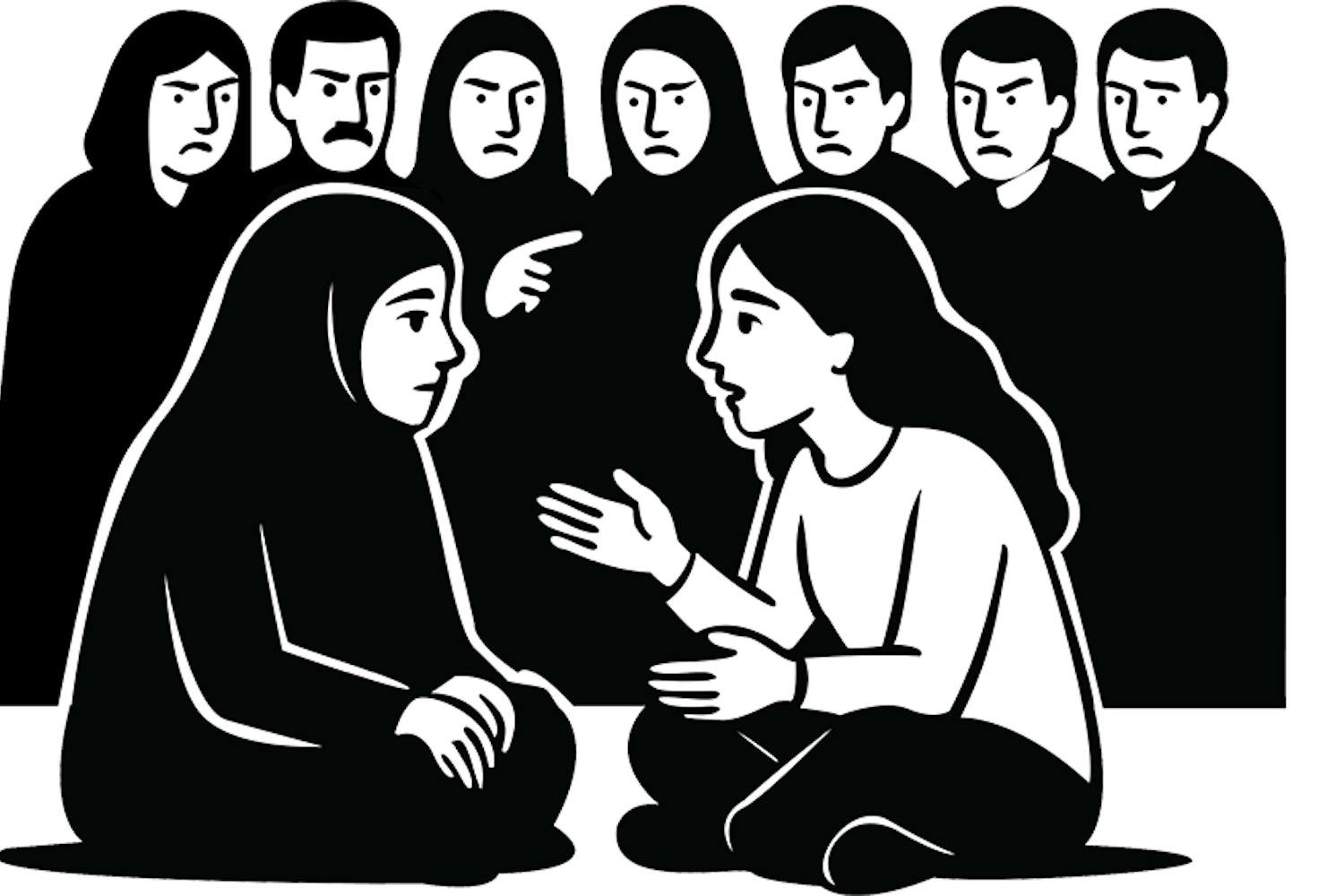With greasy fingers rummaging furiously through a tureen of popcorn, I watched with a mix of shock and voyeuristic horror as filmmaker Morgan Spurlock's body transformed from fit to fat in the compact space of 30 days while consuming a diet solely composed of items on McDonald's menu.
Picking crumbs off my shirt, I emerged from the Friday afternoon showing of "Super Size Me," Spurlock's documentary detailing the plethora of health risks involved in over-consumption of fast food. The movie made its point quite strikingly by chronicling the changes in its star over the course of the one-month Mac attack. But it really shouldn't take a movie to demonstrate something so obvious.
The cover of this month's National Geographic is not a primal shot of an animal, nor an unfathomable photo of some planetary object. It is a picture of fat -- fold after fold of exposed, fatty flesh. The surgeon general of the United States has dubbed our explosive waistlines an "obesity epidemic." For the first time in world history, there are as many overfed as underfed people.
Our convenient lifestyles, cars, desk jobs, inactive leisure and access to ample food all contribute to the problem, but there is something more. Our vegetable consumption as a nation has gone up. This would be a positive sign, if not for the fact that french fries were counted as a vegetable in the questioning. For some people, cola is now the only beverage consumed for daily hydration needs.
French fries are now qualifying, in the minds of some Americans, as a serving of a nutrient-rich vegetable. It seems our increasing pants sizes are matched only by our shrinking IQs.
Atkins, South Beach, grapefruit-only breakfasts, cabbage soup, detox days ... when will the insanity stop and a bit of common sense take its place? We are fat because we eat too much and exercise too little.
Yes, genetics come into play with the fortunate few who burn a zillion calories with each blink and for the unfortunate masses who must sweat with Richard Simmons for hours just to enjoy the occasional ice cream cone. But the key to staying in shape is fairly simple: burn as many calories as you consume.
It doesn't matter whether a person is shoveling 20 pounds of bacon down their gullet, joyously slurping cabbage soup, or, horror of all horrors, eating a slice of bread. A calorie is a calorie and it must be used or else it will remain forever positioned over the navel, on the hips or jiggling merrily under the triceps.
But above and beyond eating too much and exercising too little, there is some change in the psychology of Americans that is affecting our busting guts. I am too young to be nostalgic, but my mother recollected the days when going to get a soda at a soda fountain was a much-coveted, occasional treat, and when eating at a burger joint was reserved for special occasions.
What has happened is that, by some means, junk food has legitimized itself as a component of our normal diets. What young child considers soda a special treat? Certainly not the ones I worked with at a number of schools around the Phoenix area, who arrived at most tutoring sessions toting Pringles and Pepsi.
We Americans do not believe in the postponement or denial of pleasure. So we eat whatever we see, and whatever we like, while convincing ourselves that a fistful of Cheetos counts as a serving from the dairy group.
Spurlock's movie should never have had to be made. People can eat as much fast food as they like, but to have to be reminded that it is, in fact, not a component of a healthy diet is ridiculous. It's time for us to stop idly loosening our belts, wise up and remember that ketchup is not a vegetable.
Katie Kelberlau is a history and religious studies senior. She can be reached at katherine.kelberlau@asu.edu.




